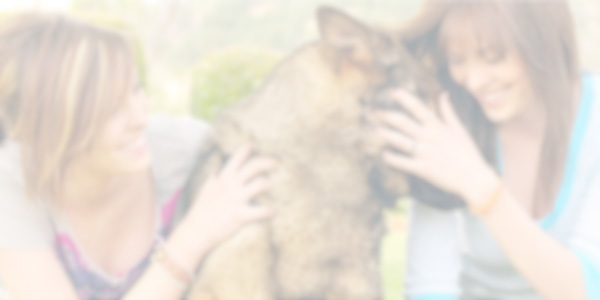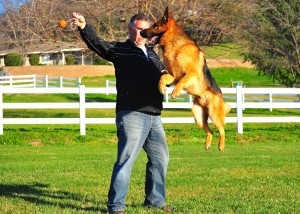Taking Charge
Clear boundaries and leadership make for a happy, well-adjusted companion.
Dogs need confident direction and leadership from their humans. Dogs need clear boundaries, and they thrive within them. So many dogs are needlessly surrendered to shelters every year for want of early leadership and training intervention in their lives. And yet, many owners are amiss as to how, exactly, they can effectively and humanely take a leadership role with their dogs. Last blog we discussed what leadership is not. This blog, we share ways to appropriately develop your role as leader. Whether you have a current canine tyrant or a puppy you want to bring up correctly, these five tips below can begin shifting the balance of power in your favor.
Tips for Taking Charge
1. Control all the resources.
This means food, time outside, free time in the house, play time with you and with toys, attention, and walks. Everything belongs to you, and while you are willing to share, it will be on your terms, not your dog’s. The dog eats at a scheduled time, and if you have a resource guarder, dinner time is a joint affair between the two of you as you work on the inappropriate behavior of resource guarding. He never gets unsupervised free run of the house, not until the relationship has been clearly defined. Use a crate to contain your dog when you cannot watch him; do not just give him free run of the backyard while you are away. This prevents the dog from finding inappropriate ways to entertain himself while you are gone; it also protects your property, and it protects your dog.
There is an added bonus: confinement begins to turn his focus toward you, the handler, and will build drive and desire to be with you and to want to do things with you. Some of the best training sessions will be when you come home and release the dog from the crate. Not only is he full of energy, but he is very excited to see you and to be with you. You have his undivided attention–perfect for training!
2. Train good manners from the start.
It is much easier to teach your dog what you want him to do, rather than continually disciplining him for all the things he shouldn’t do. So start right away with teaching good manners. Treats, attention, time outside, getting released from the crate, being fed breakfast and dinner, wanting to play with toys–all of these are opportunities for you to use and reinforce obedience commands. The dog will quickly learn that it is only the behaviors you want that get rewarded. Regardless of whether or not you have a young dog, you can start NOW with training good behaviors such as:
- walking nicely on leash
- coming when called
- sitting before going outside or before being fed
- laying down before being released from the crate
- laying down during your dinnertime instead of begging for food, etc.
While there are many methods of training a dog, we have found that training initial behaviors with a verbal marker (such as “Yes” or “Good”) and various rewards works best to help the dog understand exactly what is desired. It also keeps training fun, keeps the stress level low, and helps the handler learn how to effectively communicate with their dog.
3. Play sessions are training sessions. There is no such thing as “free play”.
Nothing is free, including their play time. The dog should not be turned out loose into the backyard to entertain itself in any way it wants, with all the toys it wants. If there are relationship problems and power struggles, even play time must be structured. Use your dog’s most energetic times to your advantage. Encourage him to play with you; bring out the toys that are only used during your special play and training time. Play time becomes training time, as you create games for the dog to play with you that also enforce your leadership role and your obedience training. This means that you will need to learn how to play with your dog.
We enjoy games like two-ball (with balls on a rope, NOT tennis balls) and tug to encourage the dog to interact with us while also engaging in primal behaviors like chasing and biting a prey object. Once the dog understands the game, you can begin to incorporate obedience training. Here are several videos that show how play sessions can also be training sessions:
- John playing two-ball with Gringo (now Ringo, a Placer County Sheriff K9)
- Training Torex
- Training Link (precocious youngster)
You will notice that in all three of these videos, play and training are integrated into one session, and that the play/reward draws the dog further into a relationship with its handler. You may also notice that the older dogs can do more obedience for longer periods of time, while the young dog has more play incorporated into his training session.
4. Set and enforce clear boundaries.
You need to first figure out what behaviors you find acceptable, and which behaviors are unacceptable. If you know this ahead of time, you will be better able to direct your dog and shape appropriate behavior, rather than playing ‘catch-up’ while the dog engages in every behavior other than the one that you want him to do. When establishing boundaries, you must be very clear and consistent. Boundaries can even include specifics like only laying on the appropriate dog bed in the house, or staying in a particular place while the rest of the family eats dinner. Decide what rules you will have, show them to the dog, reinforce them positively where you can, and enforce them firmly and clearly. All family members must be consistent with maintaining these boundaries.
5. Deal with unacceptable behavior immediately, and be proactive with the solution.
Behavior modification begins with identifying the actual behavior you want. You can then train toward this goal and replace the unwanted behavior. This is true even when administering a correction. If the dog is corrected for an inappropriate behavior (such as jumping up on great-grandma), he should immediately be shown the right behavior, and then rewarded for it. The sequence becomes “NO, off! Sit. Good sit, good.” If the dog shows a tendency toward being a resource guarder, or tries to get “snippy” when having its feet handled for the first time, then all your energy should be concentrated into fixing this problem, rather than just ignoring it and hoping it will get better. It won’t.
Taking appropriate leadership of your dog requires work and effort; however, the more effort you put in at the beginning during those formative months and years, the greater the payoff at the end! Join us next blog as we discuss the top 10 behaviors every dog and puppy must learn (besides potty training, of course!).


